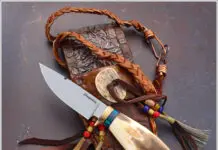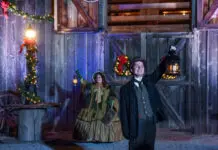The eyes of the international arts community turn in unison every December to sunny Miami Beach.
Since it launched in 2002, Art Basel Miami Beach has come close to rivaling the scope of its Swiss sister event, the globe’s most renowned visual arts event. The Dec. 1-4 Art Basel Miami Beach combines an international selection of top galleries with an exciting program of special exhibitions, parties and crossover events featuring music, film, architecture and design. Hundreds of the world’s leading galleries exhibit 20th- and 21st-century artworks by thousands of artists. The world’s most respected galleries offer exceptional pieces by both renowned and emerging artists.
While the Art Basel exhibition is housed at the Miami Beach Convention Center, both official and unofficial ancillary events take place across south Miami Beach (“South Beach”), and in edgy mainland Miami neighborhoods such as Wynwood and the Miami Design District. Numerous other arts events have launched or changed their schedules to coincide with Art Basel, creating an “Art Week” that engulfs both the beach and the mainland for the first half of December.
Hundreds of thousands of visitors take to the scenic streets of Miami Beach for Art Basel, making it not just the focal point of the global arts world, but also arguably the most exciting city in the U.S. for weeks.
Of course, Miami Beach is generally in the top ranks of exciting destinations. Alternately thought of as America’s Riviera and Manhattan South, it is the southernmost point of the island city that is the most interesting to visitors – generally south of 23rd Street and close to the ocean. It is the beaches adjacent to Ocean Drive that are prime attractions, with hundreds of quirky hotels, bars and eateries just steps away from the sand. Just a block inland, Collins Avenue is home to numerous shops and hotels and remnants of the color that defined the city before its popularity began to attract chain stores and when head shops and eclectic galleries dotted the street. Washington Avenue is the center of nightlife with leading clubs such as Mansion, Mynt and Twist – the sizable gay community’s favored locale.
Besides the beach and nightlife, fine dining also abounds throughout the city and notably in many of the more upscale hotels. The Art Deco District, south of trendy Lincoln Road, contains the colorful tropical inspired deco architecture that was the original impetus for South Beach’s emergence as international hotspot. Those who can tear themselves away from the world-class beaches and nightlife can take in the architecture in easy walking tours. The Miami Design Preservation League (www.mdpl.org) is a terrific asset to begin exploration of all things deco.
Stay In Style
Most of Miami Beach’s most acclaimed hotels and resorts are within just a few blocks of the Miami Beach Convention Center and here are some nearby options worth considering.
Delano Hotel: This cool urban resort haven designed by Philippe Starck is the epitome of oceanfront South Beach cool, from soaring lobby to rooms of elegant white and to breathtaking pool. With almost 200 guest rooms and just blocks from the convention center, the Delano will be a particularly happening place when the show is in town. www.delano-hotel.com
The Tides South Beach: This Ocean Drive Art Deco icon features 45 elegant suites. Beautifully decorated and with sweeping views of the ocean. The service is legendary and highly personalized in this spectacular example of Miami Beach’s grandeur. www.tidessouthbeach.com
Dream South Beach: For those looking for some real South Beach funky vibe, Dream South Beach’s 108 rooms and suites located a block from the beach and next door to the former home of Versace can be fun. Late ‘70s style décor and a spectacular rooftop pool are just part of the appeal at this eclectic hotel. www.dreamsouthbeach.com
At A Glance
Schedule: Dec. 1-4, 2011
Location: Miami Beach, Fla.
Venue: Miami Beach Convention Center
Getting There: Driving Miami Beach is a risky matter. Taxis are plentiful and reliable on South Beach. Ask to be dropped off at the Convention Center Drive entrance or Washington Avenue entrance.
Lineup: An exclusive selection of more than 250 leading art galleries from North America, Latin America, Europe, Asia and Africa will exhibit 20th and 21st century artworks by more than 2,000 artists.
General and Ticket Info: www.artbaselmiamibeach.com
Hot Picks
Avoid: South Miami Beach is pedestrian friendly, but some parts are friendlier than others. Ocean Drive and chic Lincoln Road are your safest bets. Be particularly careful walking Washington Avenue after dark.
Bike: Enjoy exploring the Beach by bike with easy rentals citywide from Deco Bike. Pick up and return to kiosks all over town. www.decobike.com
Eat: Cuban cuisine most strongly speaks to the heart of Miami Beach and fortunately the real deal is also wallet-friendly. Check out David’s Café’s two South Beach locations, and do not forget the memorable café con leche. www.davidscafe.com
Visit Online
www.miamibeachfl.gov/visitors
Side Trip: Fort Lauderdale and Palm Beach
While the spectacle of Art Basel might be the prime South Florida attraction, there is plenty more to see and do in South Florida than just Miami Beach and mainland Miami. Although it might seem like one continuous city from the southernmost part of Miami-Dade County half the way up Florida’s east coast. It is in reality a stretch of different towns and cities, some of which are particularly interesting to visitors.
Just minutes north of Miami is Fort Lauderdale, famed for generations because of it having been featured in the classic film Where The Boys Are. Long gone are the days of the city’s beach being the number one spring break hot spot, and Miami has subsequently claimed the title as Florida’s sun and fun capital. But with its miles of sandy beaches, clean waterfronts and superior parking along the waterfront, it remains a slightly more sedate destination with much of the appeal of Miami and other oceanfront Florida meccas. Generally, Fort Lauderdale is slightly less tourist oriented, slightly less international and glamorous, and slightly less crowded. It lays claim to being the “Venice of America,” because of its numerous inlets, canals and inland waterways, some of which are abutted by luxurious homes.
Still the beach is Fort Lauderdale’s top attraction and there are numerous access points to enjoy it. Where Hollywood Boulevard meets the ocean in the neighboring town of Hollywood, through Dania Beach and all the way to the northern end of Fort Lauderdale, virtually every major east-west thoroughfare (and exit from Interstate 95, eastern South Florida’s only real highway) intersects with the ocean and there is usually parking and facilities within blocks. From Broward Boulevard to Sunrise Boulevard along State Road A1A (which runs parallel to the shoreline across most of the state) is arguably the most popular stretch of beach in the city, and was the impetus for the film that made Fort Lauderdale a household. The Hollywood Broadwalk and Dania Beach’s John Lloyd State Park are also highly prized beaches, with Hollywood’s waterfront also housing ample restaurants, bars and entertainment venues.
Other ways to enjoy the water in the Venice of America include snorkeling, deep sea fishing or scuba diving from out of one of the numerous piers, gondola tours, boat and yacht rentals, kayaking the inland waterways, and of course, touring the Intracoastal on one of the tours spotlighting the city’s waterfront mansions. The concierge or front desk at most major hotels in the city should be able to provide numerous vendor options for any watery excursion. The Jungle Queen Riverboat cruise is an ideal way to learn about both historic Fort Lauderdale and to see vaunted Millionaire’s Row.
Although Fort Lauderdale’s Riverwalk arts, shopping and entertainment venue is newer and in close proximity to the ocean, it is Las Olas Boulevard that is the city’s real social and entertainment heart. South of downtown and just east of US Highway 1, Las Olas is a stretch of some of the city’s finest restaurants, art galleries, boutique and eclectic shopping, bars and entertainment sites. While the waterfront can be raucous, Las Olas revelry leans to the upper scale.
Other Fort Lauderdale attractions include the International Swimming Hall of Fame, the Museum of Science & Discovery and the Broward Center for the Performing Arts.
North from Fort Lauderdale
Immediately north of Fort Lauderdale are the affluent communities of Boca Raton and Palm Beach. Although separated by just a short drive, they have the feel of being far more removed from their neighbors to the south.
Boca Raton is predominantly upscale residential on its eastern (most visited) side and generally doesn’t see a lot of visitors from outside the region. Beyond miles of planned gated communities and some charming homes – virtually all featuring Mediterranean revival architecture, its primary appeal is Mizner Park. Mizner Park is an open air dining, shopping and entertainment venue around which most of the town’s social life revolves. Besides pricy shopping and solid if unremarkable upscale dining, the Boca Raton Museum of Art is likely the most interesting attraction to visitors.
The Hawaiian themed Maui Spa & Wellness Center is a tropical oasis of pampering and relaxation in Boca, while Sugar Sand Park and Red Reef Park are two of the favorite places to enjoy the Florida environment away from the throngs of tourists more common in Fort Lauderdale and Miami.
North of Boca Raton and on the east side of Palm Beach County, the wealthy lifestyle ante gets upped even more. Oceanfront Palm Beach is one of the wealthiest and most upscale communities in the country. The City of West Palm Beach is slightly more urban and diverse. Far to the west of the county, Wellington is famed horse country. And ironically some parts of the county (the wealthiest county in the US) bordering the Everglades are actually some of the poorest regions of the state (a result of a large population of immigrant workers).
From historic sites to upper echelon shopping, there is an eclectic assortment of sites and activities available in Palm Beach County.
Ritzy Palm Beach features opulent sites resting amidst notably Mediterranean architecture, such as The Breakers Palm Beach, a luxurious resort that’s favored by visiting celebs and the jet-set. While staying there, few miss the opportunity to traverse the world-famous Addison Mizner creation, Worth Avenue – home to the highest end shopping outside of Manhattan, and to most designer names of significance in the fashion world. On the exclusive island of Palm Beach rests Mar-A-Lago, the historic estate originally owned by Marjorie Post and now owned by Donald Trump. Although Michael Jackson and Lisa Marie Pressley spent their honeymoon there in 1994, today it would require a private invitation to fully explore the US National Historic Landmark.
Less exclusive destinations abound as well such as the Flagler Museum-Whitehall in Palm Beach, another historic estate but this one open to the public. It preserves the historic of Henry Flagler and his remarkable role in Florida history.
The Four Arts Gardens, also known as the Four Arts Library, Gardens and Philip Hulitar Sculpture Gardens, are spectacular Palm Beach botanical gardens. The Norton Museum of Art is one of the state’s leading venues of its kind. The Kravis Center, named for Tulsan Ray Kravis, is one of the most respected performing arts houses in Florida.
West Palm Beach’s Clematis Street is the center of hip entertainment and shopping for the local crowd that doesn’t have an in with Mar-A-Lago’s Trump. Families with children, though, might prefer the adventurous Lion Country Safari or Arthur R. Marshall Loxahatchee National Wildlife Refuge or at Grassy Waters Preserve.
Art lovers might arrive in South Florida for Art Basel Miami Beach, but for those with an appreciation of the art of living well, tropically and interesting – the coastal communities of South Florida offer endless appeal.























